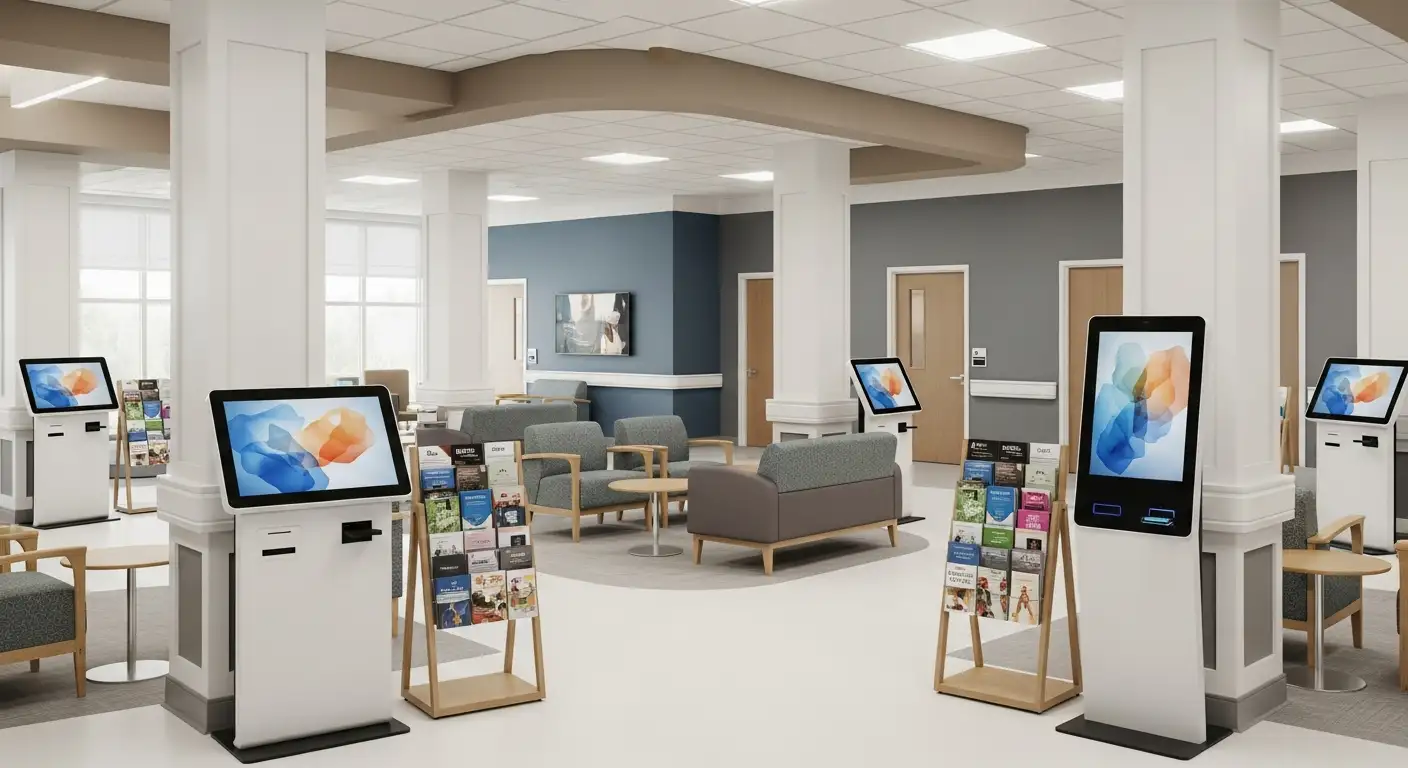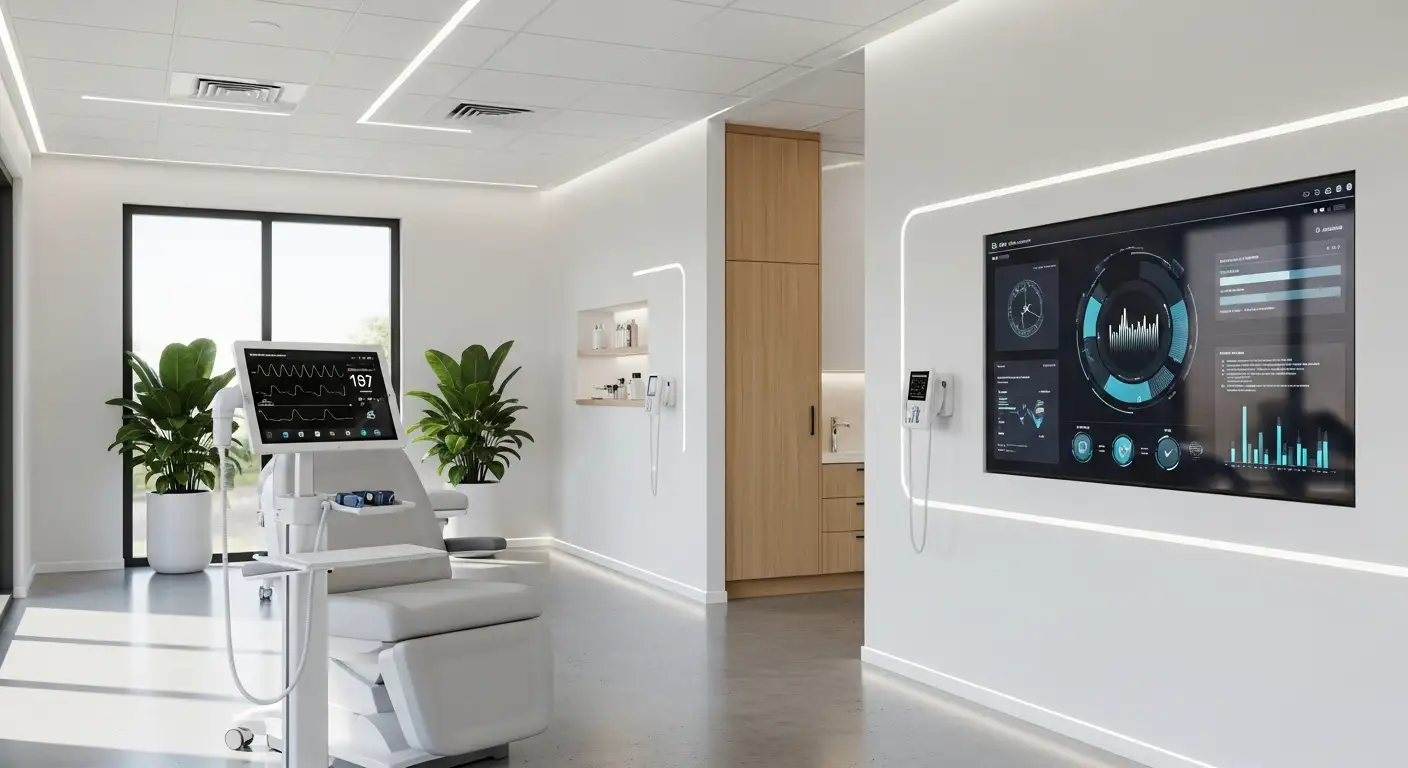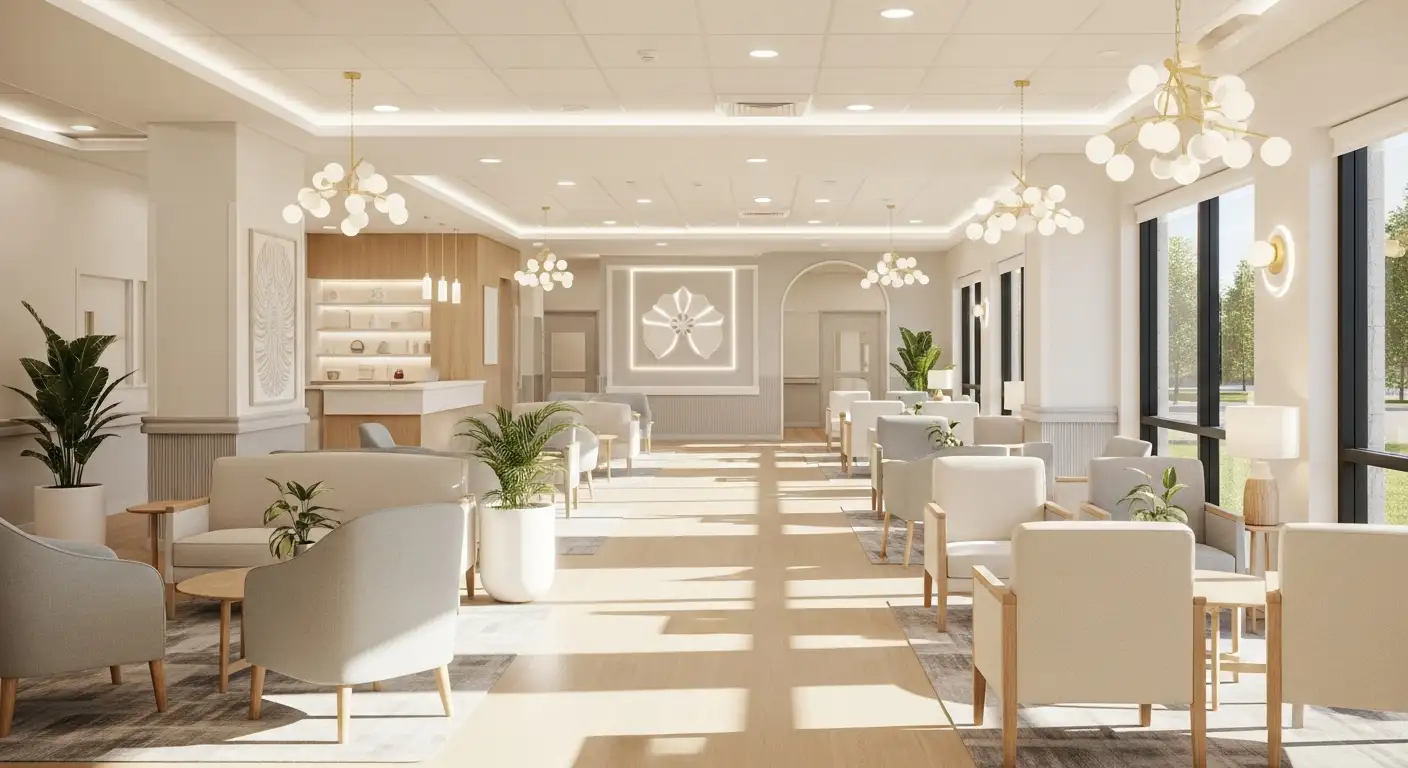Advantages of Remote Wellness Monitoring
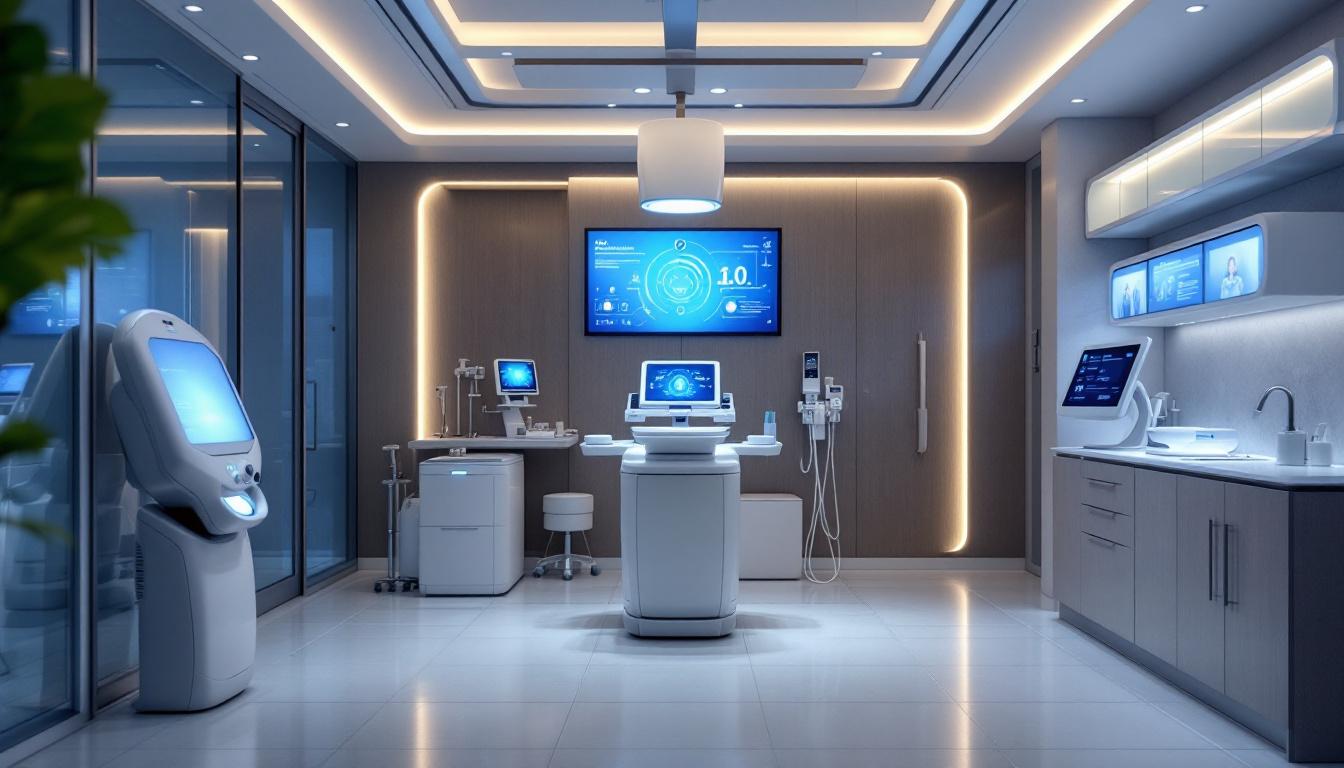
The Future of Healthcare: Remote Wellness Monitoring
Remote wellness monitoring, enabled by advanced digital technology, fundamentally shifts how healthcare is delivered. It offers patients and providers a seamless, continuous, and personalized approach to health management that enhances outcomes, reduces costs, and increases access. This article explores the multifaceted advantages of remote wellness monitoring, highlighting how it is shaping a more efficient, patient-centered healthcare system.
Comprehensive Benefits of Remote Wellness Monitoring
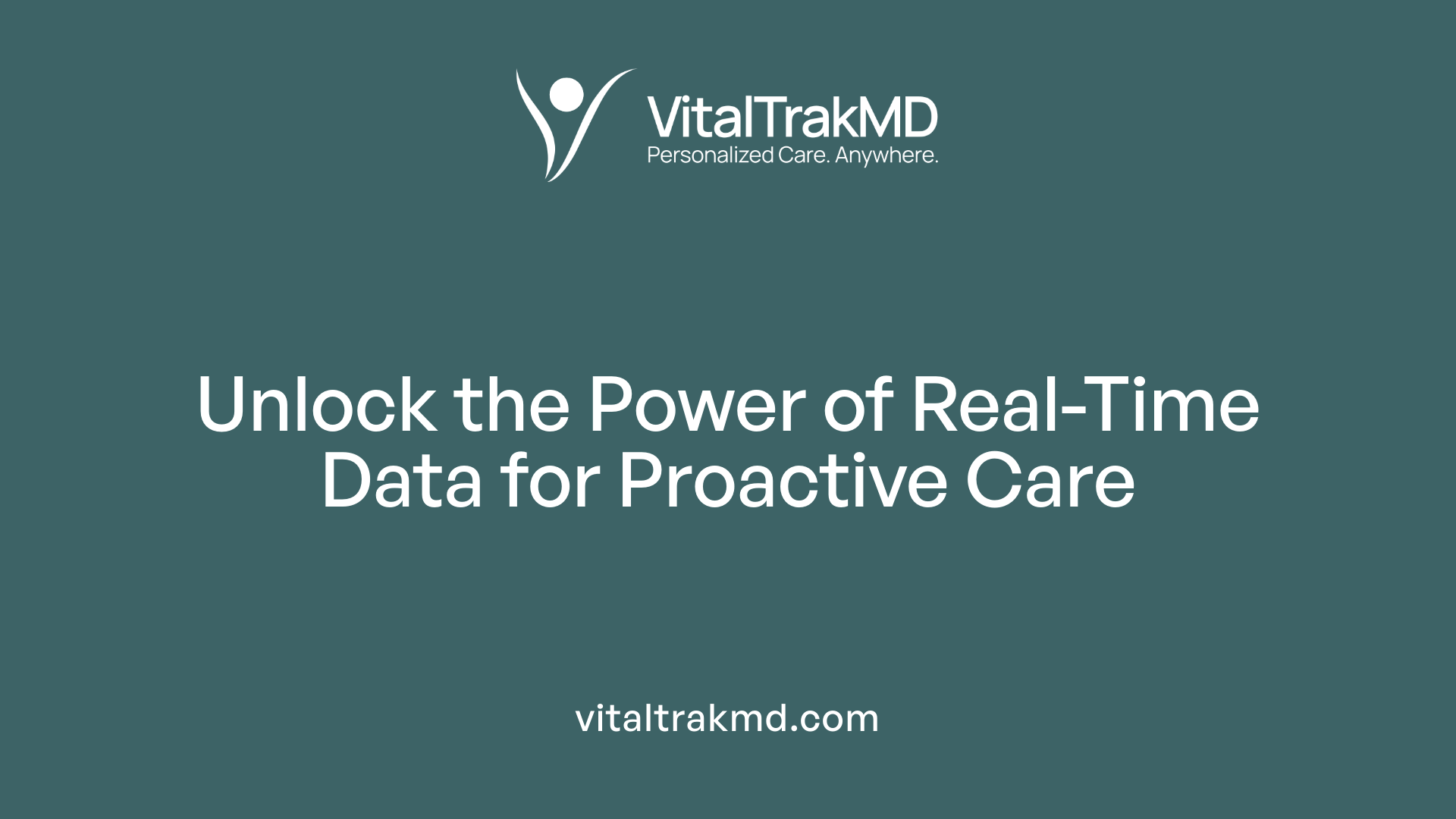
What are the benefits of remote wellness monitoring for healthcare?
Remote wellness monitoring (RPM) offers a multitude of advantages in healthcare by providing continuous, real-time data collection from patients outside traditional clinical settings. This constant stream of health information allows providers to identify early signs of deterioration, enabling timely intervention that can prevent complications. For patients, RPM fosters greater engagement and self-care by supplying accessible health metrics, which bolsters confidence and satisfaction with their care.
This monitoring also significantly improves access to healthcare, especially for those in rural locations or with mobility issues, reducing the need for frequent in-person visits. Economically, RPM cuts costs by minimizing emergency department visits, hospital admissions, and avoidable appointments. It streamlines clinical workflows, enhances patient-provider communication, and supports personalized treatment adjustments based on real-time data.
Overall, RPM promotes a proactive, efficient, and tailored approach to healthcare delivery, leading to improved health outcomes, higher patient satisfaction, and more effective use of healthcare resources.
Impact on Healthcare Delivery and Cost Efficiency
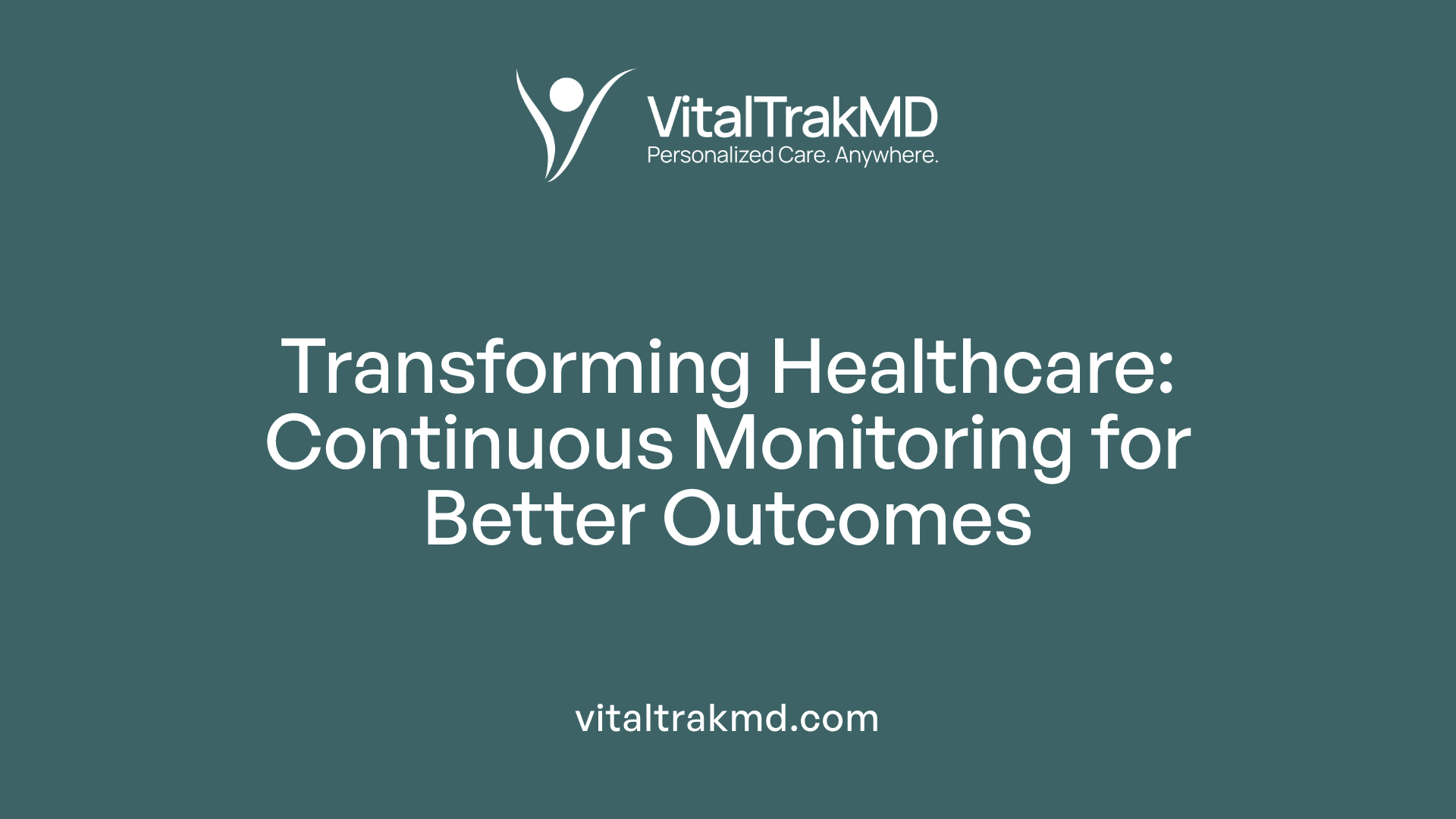
What are the benefits of remote wellness monitoring for healthcare?
Remote wellness monitoring plays a transformative role in modern healthcare by providing continuous, real-time data collection that helps detect health issues early. This proactive approach allows healthcare providers to intervene promptly, often preventing complications and reducing the need for emergency care or hospital stays.
One significant advantage is enhanced patient engagement. When patients have access to their health information through RPM devices—like blood pressure cuffs, glucose monitors, or respiratory sensors—they become more involved in managing their conditions. This increased confidence often leads to better adherence to treatment plans and improved health outcomes.
RPM also expands healthcare access, especially for individuals in rural locations or with mobility challenges. It bridges the gap between patients and providers, ensuring consistent monitoring without the need for frequent in-person visits. This convenience not only improves patient satisfaction but also reduces healthcare costs.
Cost reductions are substantial. RPM has been linked to lower rates of hospital readmissions, fewer emergency department visits, and decreased inpatient stays. By avoiding unnecessary hospitalizations, healthcare organizations can save significant resources.
Furthermore, RPM streamlines clinical workflows. Automated data transmission and alert systems enable providers to prioritize care efficiently, reducing administrative burdens and optimizing resource use. Integrated RPM platforms facilitate better communication between patients and healthcare teams, fostering closer collaboration.
In terms of financial opportunities, RPM opens avenues for billing and reimbursement. Numerous CPT codes now support remote monitoring services, allowing providers to generate revenue for their efforts. As insurance payers, including Medicare and private insurers, increasingly recognize and reimburse RPM, healthcare organizations can improve financial sustainability.
The cumulative effect of these benefits—improved patient outcomes, operational efficiencies, expanded access, and revenue opportunities—makes RPM a pivotal component of the future healthcare landscape.
How does remote monitoring reduce hospital readmissions?
By enabling constant surveillance of chronic and postoperative patients, RPM detects early signs of deterioration. For example, patients with heart failure can transmit daily weight and vital sign data, alerting providers to fluid overload before symptoms worsen.
This early detection facilitates timely adjustments in medication or care plans, preventing complications that often lead to hospital readmissions. Studies have shown that patients monitored remotely, especially those with implanted cardiac devices or chronic respiratory conditions, experience fewer readmissions, which enhances overall healthcare quality.
How does RPM promote cost savings in healthcare?
Cost savings through RPM are notable at multiple levels. Reduced emergency visits and hospital stays mean significant savings for healthcare systems.
In addition, by shifting care from inpatient to home settings, organizations can decrease inpatient bed occupancy, freeing resources for more acute cases. The reduction in administrative tasks and manual data entry further cuts operational costs.
Billing opportunities are also expanding. With new CPT codes and reimbursement models, providers can monetize remote monitoring services, creating a sustainable revenue stream.
How does RPM improve healthcare workflow efficiency?
Integrating RPM data with Electronic Health Records (EHRs) allows clinicians quick access to vital information, simplifying decision-making.
Automated alerts and trend analysis aid in prioritizing patient care, enabling staff to focus on patients who need immediate attention. This efficiency is especially vital during health crises like the COVID-19 pandemic, where resource management is crucial.
Staff can manage more patients effectively without increasing workload, addressing workforce shortages and improving overall service quality.
What are the billing and reimbursement prospects associated with RPM?
Recent updates in healthcare policy have introduced specific CPT codes for remote patient monitoring and management. Providers can bill for services such as data transmission, analysis, and patient education facilitated through RPM.
Reimbursement rates vary, but many insurers, including Medicare, cover RPM services partially or fully after satisfying certain criteria. This financial recognition encourages more health systems to adopt RPM, fostering sustainability.
In turn, healthcare providers can increase revenue while delivering higher-quality, patient-centered care.
| Aspect | Details | Additional Notes |
|---|---|---|
| Cost Savings | Reduction in hospital readmissions and emergency visits | Results in significant financial benefits for healthcare systems |
| Efficiency | Streamlined workflows through EHR integration and automated alerts | Improves provider responsiveness and reduces administrative efforts |
| Billing Opportunities | CPT codes for remote monitoring services | Reimbursement from Medicare and private insurers, enhancing revenue |
| Patient Outcomes | Lower rehospitalization, improved disease management | Supports proactive instead of reactive care |
| Access to Care | Especially beneficial in rural and underserved areas | Reduces travel and logistical barriers |
In conclusion, remote patient monitoring significantly impacts healthcare delivery by improving outcomes, reducing costs, and creating new opportunities for value-based reimbursements. Its continued growth aligns with the overarching shift toward digital and personalized health care models, making it an essential element of future health strategies.
Enhancing Patient Engagement and Satisfaction
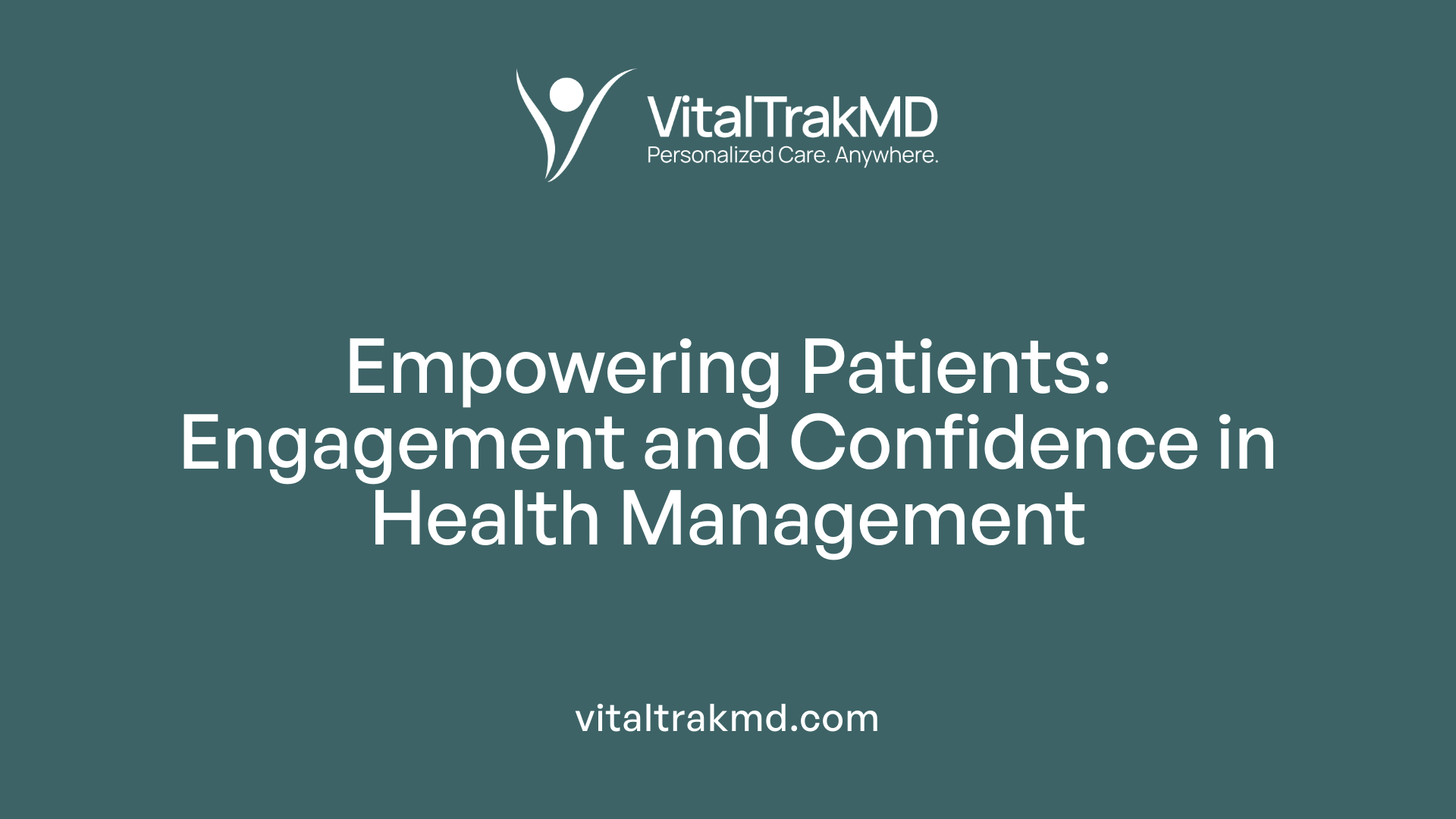
How does remote wellness monitoring improve health outcomes?
Remote wellness monitoring plays a significant role in improving health outcomes by allowing continuous, real-time collection of important health data. This ongoing data stream helps healthcare providers detect early signs of health deterioration, which enables prompt interventions before conditions worsen. By facilitating early diagnosis and treatment adjustments tailored to individual needs, RPM enhances patient safety and adherence to prescribed care plans.
Patients with chronic diseases such as hypertension, diabetes, or respiratory conditions benefit notably from RPM. Regular monitoring supports better management of mobility and functional status, reduces hospital readmissions, and diminishes the likelihood of emergency visits. Moreover, RPM broadens access to healthcare services for those in remote or underserved areas, breaking down geographic barriers.
Healthcare professionals see RPM as a practical and valuable addition to traditional care. It not only supports personalized treatment but also fosters patient confidence and involvement. Despite challenges like managing large amounts of health data, safeguarding privacy, and overcoming technological barriers, ongoing innovations and regulations continue to optimize how RPM influences health outcomes positively.
What features and functionalities do remote health monitoring devices typically have?
Devices used in RPM are equipped with various features aimed at making health management efficient and user-friendly. Key functionalities include precise measurement of vital signs such as blood pressure, heart rate, blood oxygen saturation, blood glucose levels, body temperature, and weight. These data points are crucial for managing conditions like hypertension, cardiovascular diseases, diabetes, asthma, and COPD.
Most devices support data transmission capabilities, sending health information securely via Bluetooth, cellular networks, or cloud platforms. This allows healthcare providers to access timely patient data remotely, facilitating quicker decision-making. Many devices also incorporate alert systems that notify both patients and providers if readings fall outside normal ranges, prompting immediate action.
User-friendly interfaces are standard, often featuring educational resources, medication reminders, and motivational prompts to encourage consistent use. Communication features such as video calls or chat functions further enhance engagement by strengthening the connection between patients and their healthcare teams.
Wearable technology, including continuous monitoring patches and smart sensors, enables seamless, ongoing observation of health parameters. Trend analysis tools within RPM devices help in assessing long-term health trajectories and in making informed treatment modifications.
| Feature | Functionality | Benefits |
|---|---|---|
| Vital Sign Monitoring | Blood pressure, glucose, oxygen levels, etc. | Tracks health status accurately |
| Data Transmission | Bluetooth, cellular, cloud | Enables real-time sharing with providers |
| Alerts & Notifications | Abnormal readings | Supports early intervention |
| Educational Resources | Medication info, health tips | Promotes self-management |
| Communication Tools | Video, chat | Boosts patient-provider engagement |
| Wearable Technology | Continuous sensors | Facilitates ongoing health tracking |
Why is patient education important in remote monitoring?
Empowering patients through education is a fundamental aspect of RPM. When patients understand their health conditions and how to interpret their monitoring data, they become more confident in managing their health. This knowledge fosters better adherence to treatment plans, medication schedules, and lifestyle modifications.
Enhanced self-management reduces unnecessary healthcare visits and hospitalizations, saving costs and improving quality of life. Patients equipped with educational resources also tend to participate more actively in their care, ask informed questions, and communicate more effectively with providers.
In conclusion, RPM not only provides valuable clinical data but also serves as a platform for patient education, creating a more collaborative, informed, and proactive healthcare experience.
Technology Integration and Future Outlook

How do telehealth technologies support remote wellness monitoring?
Telehealth technologies are the backbone of remote wellness monitoring (RPM), utilizing a variety of digital tools like wearable sensors, mobile apps, and connected devices such as blood pressure cuffs, glucose monitors, and respiratory sensors. These devices continuously gather vital health data, including blood pressure, glucose levels, oxygen saturation, and activity metrics, and transmit this information securely to healthcare providers.
This real-time data sharing allows physicians to monitor patients' health status outside of traditional settings, enabling early detection of any health deterioration. For example, patients with chronic conditions like hypertension or diabetes can have their parameters tracked continuously, leading to timely interventions and personalized treatment adjustments.
Moreover, telehealth platforms support virtual consultations and patient portals that facilitate two-way communication, giving patients easy access to their health data and care plans. This connectivity enhances patient engagement and satisfaction while streamlining clinical workflows.
Studies have shown that these technologies lead to better health outcomes, such as lower hospital readmission rates, more control over chronic diseases, and overall cost savings for healthcare systems. Overall, telehealth tools significantly broaden access to quality healthcare, especially for rural or mobility-limited populations, fostering a shift towards more proactive, patient-centered care.
What are the common challenges associated with remote wellness monitoring?
Despite its many benefits, RPM faces several challenges that can impact its effectiveness and broad adoption. One major concern is ensuring data accuracy and reliability. With large volumes of data streaming from various devices, healthcare providers may encounter difficulties in verifying information quality, which is crucial for making sound clinical decisions.
Technological barriers also pose obstacles. Maintaining consistent connectivity, especially in rural or underserved areas, is critical for uninterrupted data transmission. Additionally, integrating diverse devices and platforms with existing electronic health record (EHR) systems can be complex, requiring compatible software solutions and standardized protocols.
Security and privacy concerns are significant, as transmitting sensitive health information over networks exposes data to potential cyber threats. Ensuring compliance with regulations like HIPAA and implementing robust cybersecurity measures are essential to protect patient data.
Financial challenges include the high initial costs of RMP devices, infrastructure development, and ongoing maintenance. These expenses can be prohibitive for resource-limited healthcare facilities.
Furthermore, user acceptance varies. Elderly or less tech-savvy patients may find digital devices intimidating or difficult to operate, leading to suboptimal data collection. Provider workload may also increase, as managing large data streams and responding to alerts requires additional effort.
Addressing these challenges entails developing user-friendly devices, enhancing cybersecurity, improving integration with existing systems, and providing adequate training and support to both patients and healthcare providers.
Integration with Electronic Health Records (EHR)
The seamless connection between RPM devices and EHR systems like PrognoCIS is fundamental for efficient data management. Integrated platforms allow healthcare providers to access comprehensive patient health data in one interface, improving clinical decision-making. These systems enable automatic data logging, trend analysis, and alerts for abnormal readings, supporting proactive care.
Artificial intelligence for data analysis and predictive analytics
Emerging RPM solutions incorporate artificial intelligence (AI) for advanced data analysis. AI algorithms can identify patterns and anomalies in continuous health data, predicting potential health issues before symptoms appear. This capability allows for early intervention, tailored treatment plans, and improved health outcomes.
Growing adoption and acceptance
The adoption of RPM is increasing due to certifications, reimbursement pathways by Medicare and private insurers, and demonstrated cost savings. Studies report that approximately 23 million Americans used RPM tools in 2020, with forecasts reaching 30 million by 2024.
Most patients (about 80%) support remote monitoring, appreciating the convenience, safety, and improved communication it offers. Healthcare organizations see RPM as vital in managing the increasing demand for accessible, efficient care, especially amidst challenges such as aging populations, provider shortages, and post-pandemic healthcare needs.
| Aspect | Details | Additional Insights |
|---|---|---|
| Devices Used | Wearables, implantables, smartphone apps | Targeting chronic and acute conditions |
| Benefits | Early detection, personalized care, cost savings | Enhances patient engagement and satisfaction |
| Challenges | Data reliability, connectivity, security, costs | Need for user-friendly and compliant solutions |
| Future Trends | AI integration, seamless EHR linkage, wider adoption | Emphasis on predictive analytics and remote diagnostics |
This evolving landscape highlights the importance of technological innovation and supportive policies to unlock the full potential of remote patient monitoring in future healthcare delivery.
Summary and Looking Ahead
What are the benefits of remote wellness monitoring for healthcare?
Remote wellness monitoring brings a transformative effect to healthcare systems worldwide. By enabling continuous, real-time collection of vital health data, RPM allows healthcare providers to detect potential health issues early before they escalate into serious complications. This proactive approach leads to timely interventions, better management of chronic diseases, and improved patient outcomes.
Patients benefit significantly through increased engagement with their health. Access to personal health information fosters confidence, encourages adherence to treatment plans, and enhances self-care. For example, patients managing conditions like hypertension and diabetes can monitor their status daily and share data instantly with their doctors, leading to personalized adjustments.
Access to care is greatly improved, especially for those in rural or underserved areas and individuals with mobility challenges. RPM eliminates geographical barriers by providing healthcare services remotely, reducing the need for frequent clinic visits.
Cost savings are substantial, as RPM reduces the frequency of emergency room visits, hospital admissions, and unnecessary outpatient appointments. This efficiency not only lowers healthcare costs but also alleviates strain on healthcare facilities, especially during crises like the COVID-19 pandemic.
From a clinical perspective, RPM supports better decision-making. Real-time data sharing helps providers make informed choices, customize treatment plans, and visualize health trends over time. Workflow efficiencies are enhanced as RPM platforms integrate seamlessly with electronic health records, reducing administrative burdens and facilitating care coordination.
Beyond individual benefits, RPM encourages stronger communication and collaboration between patients and providers. It fosters a continuous care relationship, which boosts patient satisfaction and loyalty.
Increasing adoption and acceptance
The adoption of RPM is on the rise, driven by technological advancements, increased awareness, and supportive insurance policies. About 23 million people used RPM in 2020, with projections reaching 30 million by 2024. Most Americans—around 80%—support remote health monitoring, viewing it as a convenient, effective, and safe way to receive healthcare.
Healthcare organizations are integrating RPM to improve operational efficiency, increase revenue through billing for remote services, and expand their reach. The pandemic accelerated this trend, highlighting the importance of remote monitoring for infection control and resource management.
Potential innovations in remote wellness monitoring
Future innovations promise to elevate RPM further. Artificial intelligence (AI) and machine learning are being incorporated into devices to analyze data trends, predict health risks, and alert caregivers automatically. These advancements will enable more precise and personalized care.
Wearable sensors will evolve to monitor a broader spectrum of health metrics, including blood pressure, oxygen saturation, and respiratory function, at higher accuracy levels. Smart devices will become more user-friendly, data secure, and capable of integrating with other health systems.
Virtual reality and augmented reality may find roles in patient education and rehabilitation, providing immersive and engaging healthcare experiences.
Impact on global health care
The influence of RPM extends beyond individual clinics and hospitals, affecting global health systems profoundly. In resource-limited settings, remote monitoring can bridge gaps caused by healthcare professional shortages and infrastructure deficits.
By facilitating early diagnosis and continuous management, RPM can reduce disease burdens worldwide, especially for chronic conditions such as hypertension, diabetes, and respiratory illnesses.
Moreover, RPM supports global health initiatives by enabling data collection and disease surveillance across populations, which is vital during pandemics or epidemics.
The widespread adoption of intelligent, connected health devices also encourages innovation in telemedicine, health informatics, and personalized medicine, fostering a more resilient and accessible global healthcare ecosystem.
| Aspect | Details | Impact |
|---|---|---|
| Technology Integration | Wearable sensors, AI, machine learning, smart apps | Improved diagnostics, health predictions, personalized care |
| Accessibility | Rural areas, underserved populations, post-pandemic health care settings | Expanded reach, better health equity, reduced travel costs |
| Cost and Operational Efficiency | Reduced hospital admissions, administrative costs | Higher ROI for providers, lower patient expenses |
| Data Security and Privacy | HIPAA compliance, Encrypted data transmission | Ensuring trust, safeguarding patient information |
| Future Innovations | Virtual reality, augmented reality, broader health metric monitoring | Enhanced patient engagement, comprehensive health management |
The future of remote patient monitoring promises to make healthcare more responsive, accessible, and efficient, ultimately leading to healthier populations worldwide.
Harnessing the Power of Technology for Better Health
The integration of remote wellness monitoring into healthcare systems represents a paradigm shift towards more accessible, effective, and personalized care. Its capacity to improve health outcomes, reduce costs, and bridge gaps in health service delivery underscores its vital role in the future of medicine. Continued innovation, technology integration, and addressing challenges will further unlock the potential of remote wellness monitoring, making healthcare more proactive, patient-centered, and efficient. Embracing these advancements is essential for healthcare providers, policymakers, and patients alike to achieve a healthier global population.
References
- Benefits and Challenges of Remote Patient Monitoring as Perceived ...
- The Top 13 Benefits of Remote Patient Monitoring
- Introduction to telehealth and remote patient monitoring
- 5 Benefits of Remote Patient Monitoring - KORE Wireless
- Benefits of Remote Monitoring for Patients and Healthcare Providers
- Benefits of Remote Patient Monitoring: Why Everyone Wins With RPM
- Remote Patient Devices - 5 Key Advantages in Healthcare - Tenovi
- Remote Health Monitoring Benefits, Challenges & Solutions
- The Pros and Cons of Remote Patient Monitoring: Your Guide
Recent articles
Want to Feel Better and Live Healthier?
Join hundreds of patients taking control of their health with personalized care that fits their life – not the other way around.
Rated 4.8/5 by 32+ customers



